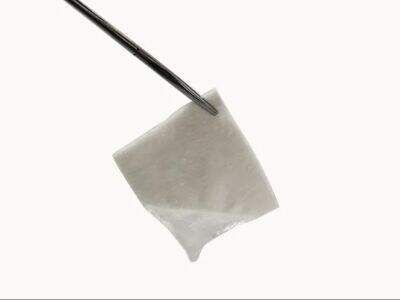When a cut or a scrape occurs, taking care of the injury is very important for the healing process. This is where new-age wound care dressings come into the picture. That special bandage is designed to protect your wound from germs and prevent infections.
Infection Prevention in Wound Healing: The Role of Advanced Dressings
Advanced wound care dressings are made of specific materials that can absorb excess moisture from the wound to keep it clean and dry. This matters because wet or dirty wounds are more prone to getting infected. Now you're using these advanced dressings that provide a barrier preventing bacteria from entering the wound and causing issues.
The Role of Modern Dressings in Infection Control: An Overview
Modern wound care dressings now utilize new technologies like antibacterial properties and strong adhesives to prevent your wound from getting dirty and to protect it. These dressings can also speed your wound’s healing by setting the stage for new skin to grow in the best conditions. Understanding the workings of these wound dressing gives us insight about the critical role they play in preventing infections and promoting wound healing.
Dressing Application and Care: To Be or Not To Be
Here are some simple steps to ensure that wound care dressings perform their function of preventing infections. For one, always wash the wound properly before applying the dressing. This will prevent dirt or germs from becoming trapped beneath the bandage. Secondly, replace the non adherent dressing regularly, as directed by your doctor. This will prevent the wound from getting infected and promote faster healing.
Innovation in Wound Dressings: Scarce Prevention Against Infections Enhancing Patient Welfare
With the blessing of new medical technology, even more effective wound dressings are available. Some dressings even contain unique enzymes that can demolish dead tissue in the wound, allowing it to heal even faster. Some are designed to provide additional padding and protection for a wound in a sensitive area. Patients can benefit from educating themselves on the newest technologies available in wound dressings to ensure they are receiving the highest level of care for their wounds.

 EN
EN
 AR
AR
 HR
HR
 DA
DA
 NL
NL
 FI
FI
 FR
FR
 DE
DE
 EL
EL
 HI
HI
 IT
IT
 JA
JA
 KO
KO
 NO
NO
 PL
PL
 PT
PT
 RO
RO
 RU
RU
 ES
ES
 SV
SV
 TL
TL
 IW
IW
 ID
ID
 SR
SR
 UK
UK
 VI
VI
 HU
HU
 TH
TH
 TR
TR
 FA
FA
 AF
AF
 MS
MS
 GA
GA
 UR
UR
 BN
BN
 LO
LO
 LA
LA
 NE
NE
 TA
TA
 MY
MY
